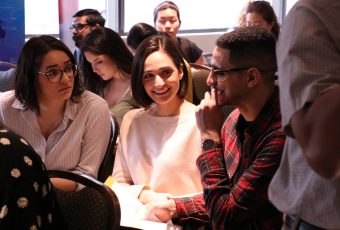Griffith technology set to personalise tendon and tissue injury rehab
A revolution in the treatment and rehabilitation of muscle/tendon injuries is on its way with the development of a ground-breaking new intelligent technology developed at Griffith University and the University of Auckland.
Called iTraining, the biomedically engineered system works in real time to provide feedback on the stresses and strains that affect a specific muscle or tendon, either following injury or in the prevention of injury.
Following the award of a grant of nearly $1m from Australian Research Council and industry partners, Professor David Lloyd, from Griffith’s Menzies Health Institute Queensland, and other colleagues are now preparing to undertake a large three-part study that will focus on the Achilles tendon.
“Currently the mechanical environment of the Achilles tendon is poorly understood because of difficulties associated with directly measuring the stresses and strains experienced throughout the tendon in daily activities. If these issues can be overcome, it will be possible to identify the loading conditions required to facilitate favourable structural and mechanical adaption of healthy, as well as injured or diseased Achilles tendons,” says Professor Lloyd.
Potential to radically transform
“The technology to achieve this goal is now within reach and has the potential to radically transform the way athletic training and rehabilitation programs for the Achilles tendon are designed and monitored.
“The approach will allow the trainer to identify an individual’s optimal loading conditions for positive structural and mechanical adaption of their Achilles tendon, by using methods that integrate the necessary technologies to measure stress-strain of the tendon in real time,” the Griffith University professor said.
The study will be broken into three parts: Part A will aim to determine the optimal loading conditions required to alter the structural, mechanical and biochemical properties of the Achilles tendon; Part B will be to develop the iTraining system which will entail participants wearing next generation wearable sensors coupled with computer models, to provide real-time biofeedback of the tendon’s mechanical behaviour; Part C will determine the efficacy of an iTraining program to alter the structural properties of the human Achilles tendon.
Professor Lloyd says the iTraining approach will be likely to have broad application to other tendons and musculoskeletal tissues within the body.
“This new ‘intelligent’ approach to training and rehabilitation is at the forefront of modern developments in biomechanics, rehabilitation engineering, sports science and sports medicine.
“iTraining has the potential to radically transform the practice of exercise prescription across the full spectrum from elite performance to rehabilitation of acute and chronic musculoskeletal conditions,” he says.
“A key feature of this approach is that feedback is subject specific and therefore consistent with the concept of the ‘quantitative’ self and the trend in science and practice is of course, to move towards models of personalised medicine and rehabilitation.”
Professor Lloyd says he envisages that the technology could be available in public gyms and physiotherapy practices in as little as four years.
This technology is being developed in conjunction with research partners including University of Auckland, University of Western Australia, La Trobe University, Noraxon (USA), Wearable wireless sensors and system, Orthocell (Australia), Regenerative Medicine Phillips Health Care Australia and Medical Imaging.
*


































Ask A Question
Ask us about your program of interest, or if you have a question about our services.
CONTACT US TODAY